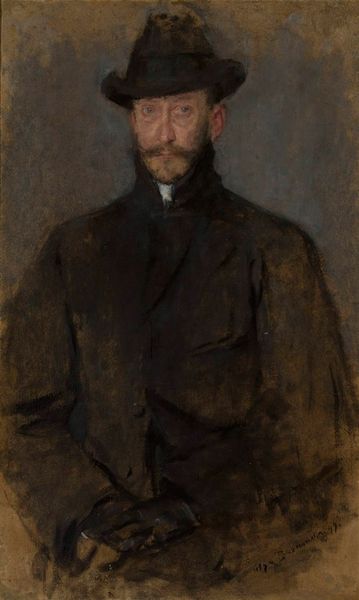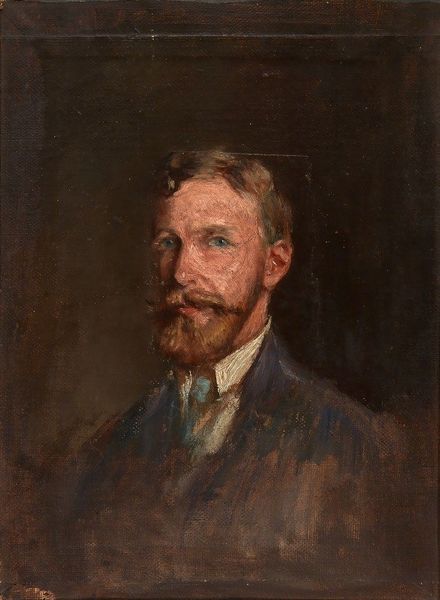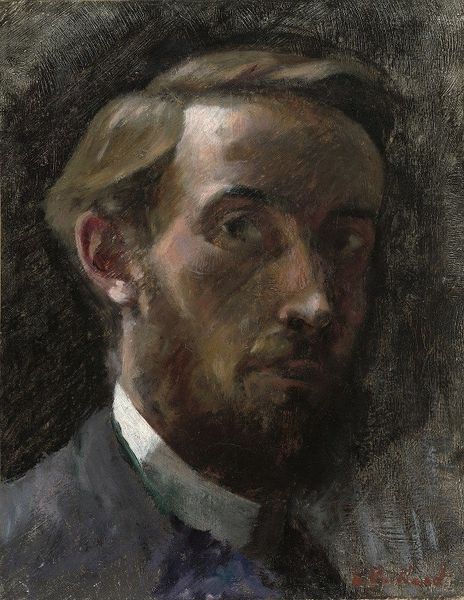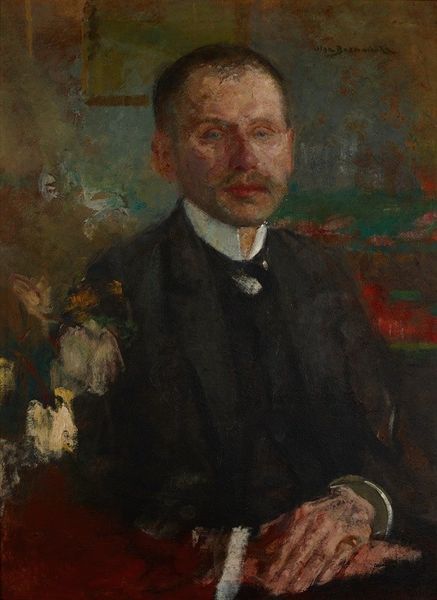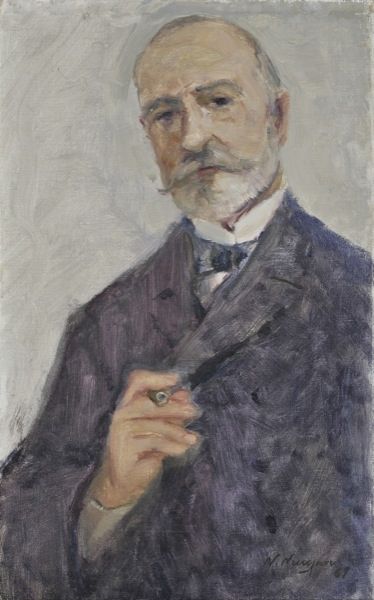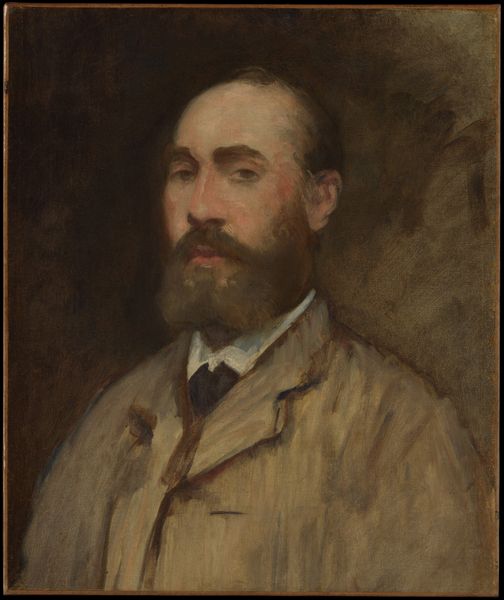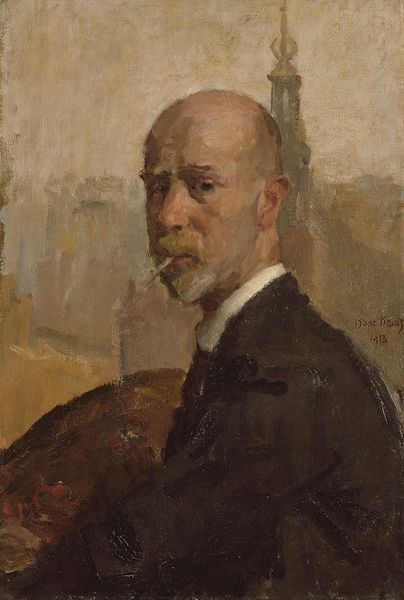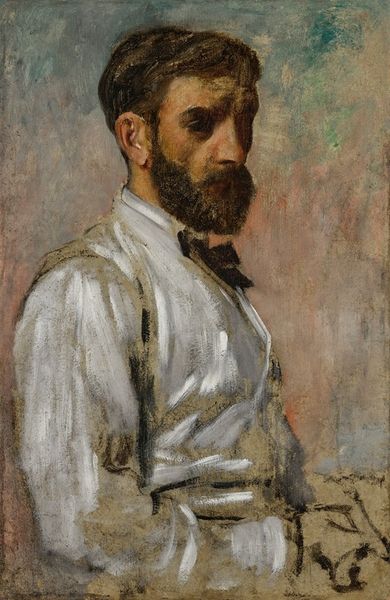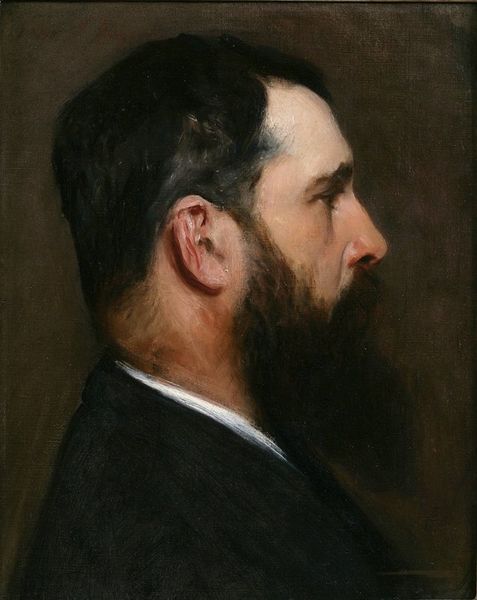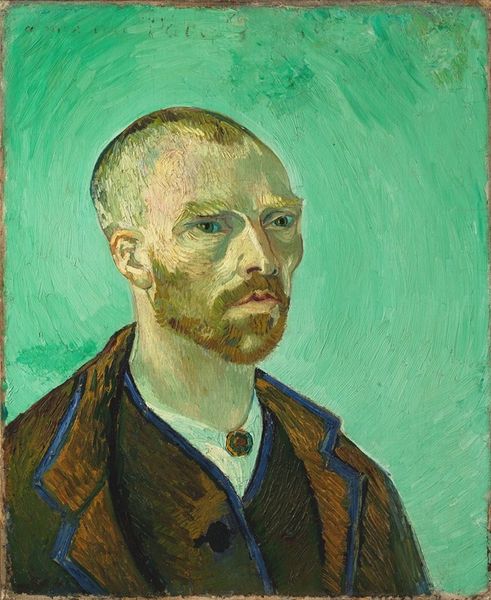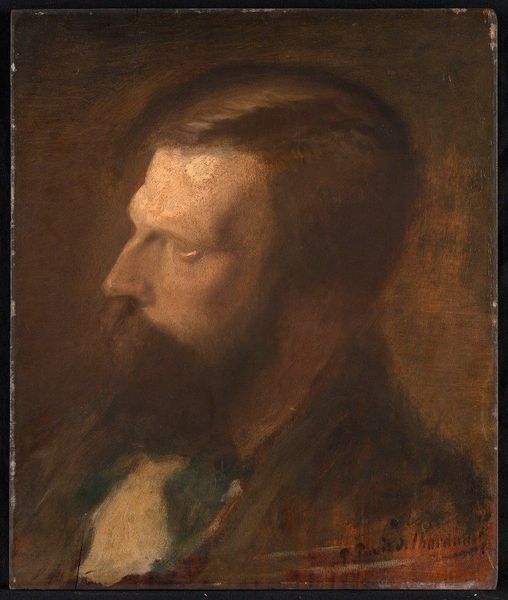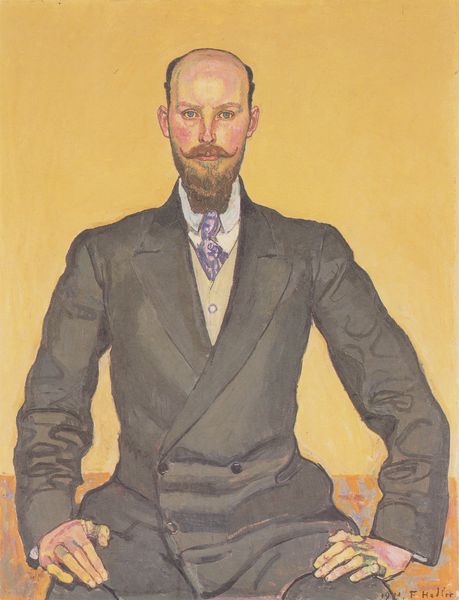
Copyright: Public Domain: Artvee
Curator: Let’s spend a moment contemplating this oil on canvas portrait, aptly named “Portrait of a Man with a Tie.” Ladislav Mednyánszky, its creator, places it somewhere between 1880 and 1900. Editor: My first impression is one of introspection. There's a quiet intensity in his gaze, almost as if he’s contemplating the very act of being observed. Curator: Precisely. Mednyánszky's portraits, particularly from this period, often reflect the societal shifts and personal anxieties of the late 19th century. This era saw the rise of the middle class and a heightened awareness of individual identity, expressed often through portraiture. Editor: That certainly explains the tie, then. It’s fascinating how an item of clothing can be laden with so much symbolism. The tie, here, acts as a signifier for middle-class status, respectability, and the demands of conformity in a rapidly industrializing society. Curator: Good observation. Consider also the artistic currents of the time. Mednyánszky incorporated elements of impressionism—notice the loose brushstrokes and attention to light—but his focus remained largely on realism, providing viewers a tangible record of contemporary citizens. Editor: But within that realism, I still find the portrait intensely romantic. The mustache, the melancholic expression… these elements romanticize him in some fashion, like he has some Byronic story of unfulfilled passion. Curator: Indeed. Mednyánszky himself often painted figures on the fringes of society – beggars, vagrants. His interest may be tied to elevating the common man to a point of individual consideration, and that attitude is present here in the sitter's proud expression. Editor: Ultimately, I think it speaks to the enduring power of the human face to reflect both the personal and the universal. Curator: Absolutely. This portrait offers a window into the complexities of identity, societal expectations, and the artistic movements that sought to capture these subtle shifts in perception.
Comments
No comments
Be the first to comment and join the conversation on the ultimate creative platform.
